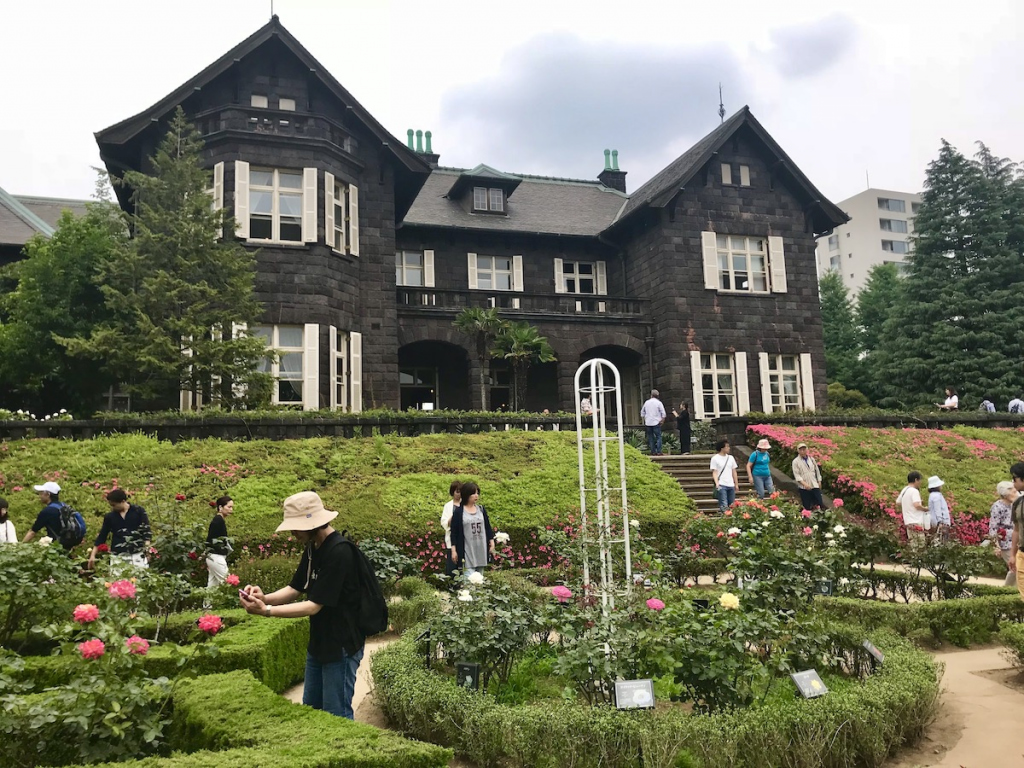It may be said that behind the curtain of Tokyo’s chaotic maze of rundown buildings and hip glass skyscrapers lurks the irresistible fascination for the Japanese society’s prowess in infusing the old with the new. Tokyo certainly keeps up with its megalopolis image in terms of modern infrastructure while at the same time unfailingly reminds the Japanese people to respect their cultural roots ingrained in temples, shrines, and exotic landscaped gardens. Yet, the undermined preservation of historical buildings in Tokyo continues to provoke severe criticism from both local citizens and foreigners, following the demolition or restructure of numerous important architectural icons, such as the Hotel Okura (1962), Kabukiza Theatre (1889) and Asakusa International Theatre (1937). Recently, the wreckage and redesign of the National Stadium (1958) and JR Harajuku station (1924) were intended to pave the progressive way towards the celebration of the coming Tokyo Olympics.
Nevertheless, a handful of such historical sites, particularly from the Meiji era, can still be seen around Ginza, Nihonbashi and Asakusa, including former residences of notable Japanese government officials and businessmen. Here are three beautifully preserved residences and gardens and one hidden site in the residential neighborhood of Setagaya, all designated as Important Cultural Assets that you should visit while in the capital.
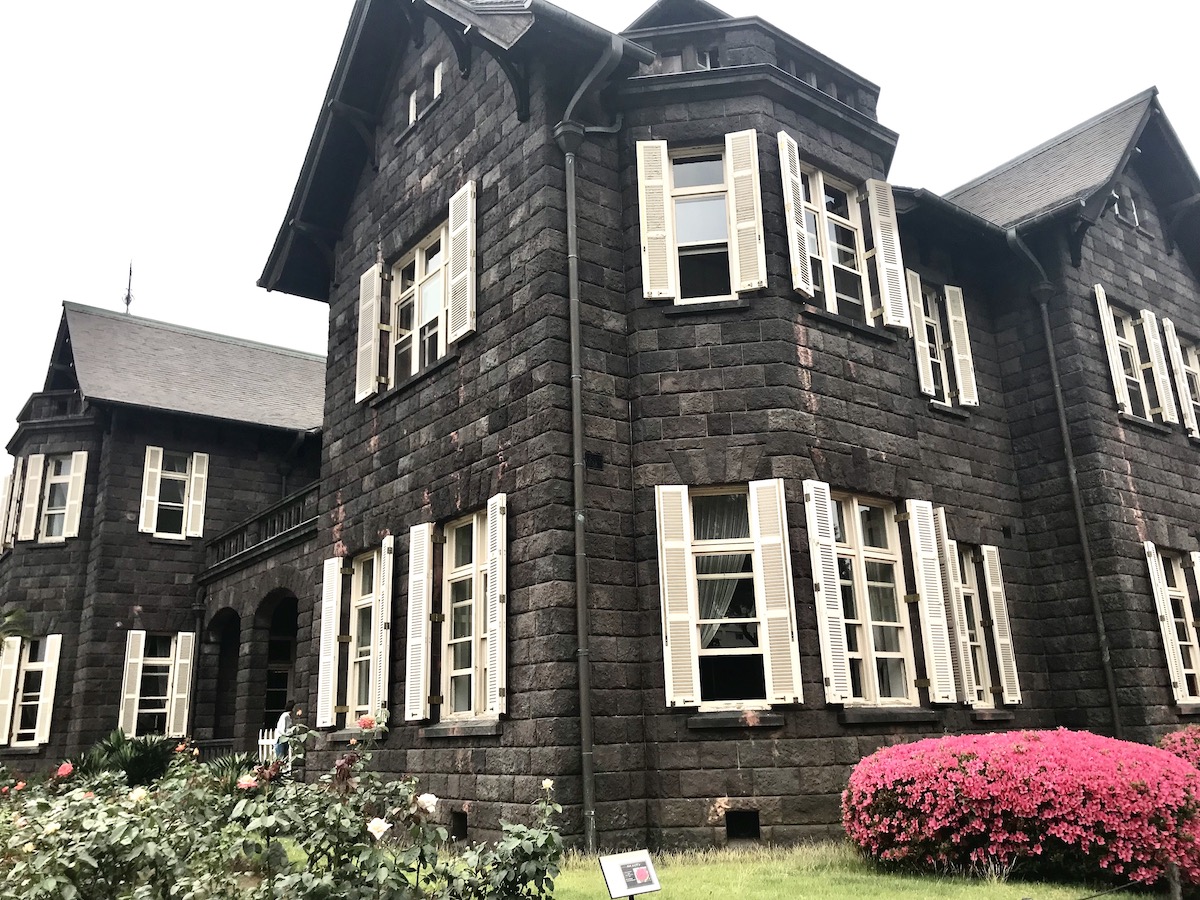
Kyu Furukawa mansion © Alma Reyes
Kyu Furukawa Gardens (Former Furukawa Gardens)
The Kyu Furukawa Gardens close to Komagome stations in Kita-ku officially opened to the public in 1956, though the western-style building built by Baron Toranosuke Furukawa and Western-style gardens designed by English architect Josiah Conder were completed in 1917. Conder was not an unfamiliar name in Japan during the early 1900s. He was commissioned by the Meiji government to teach Western architecture at the Imperial College of Engineering (now the University of Tokyo, Faculty of Engineering), which consequently resulted to the erection of Western architecture around Tokyo, such as the Tokyo Imperial Museum in Ueno, Mitsubishi Ichigokan, The University of Tokyo’s Faculty of Law and Arts Building, and others.
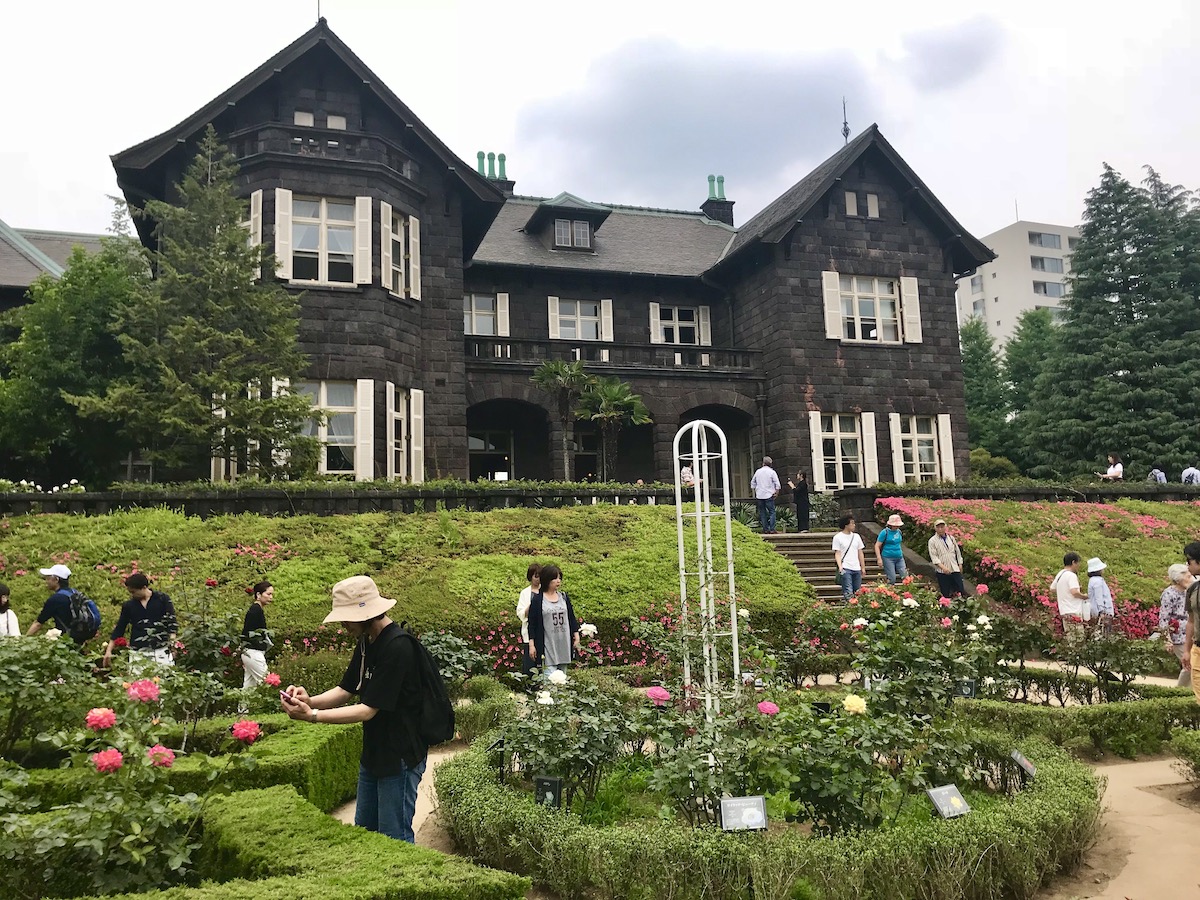
Kyu Furukawa mansion and rose garden © Alma Reyes
The mansion inside the Kyu Furukawa Gardens, now converted into the Otani Art Museum, originally belonged to Meiji-era politician Mutsu Munemitsu (1844-1897). His son was adopted into the Furukawa family. One of the members, prominent businessman Furukawa Ichibei later inherited the estate. The exterior facade is entirely western, made of brick and slate with French bay windows in white and a fronting balcony facing the exquisite gardens.
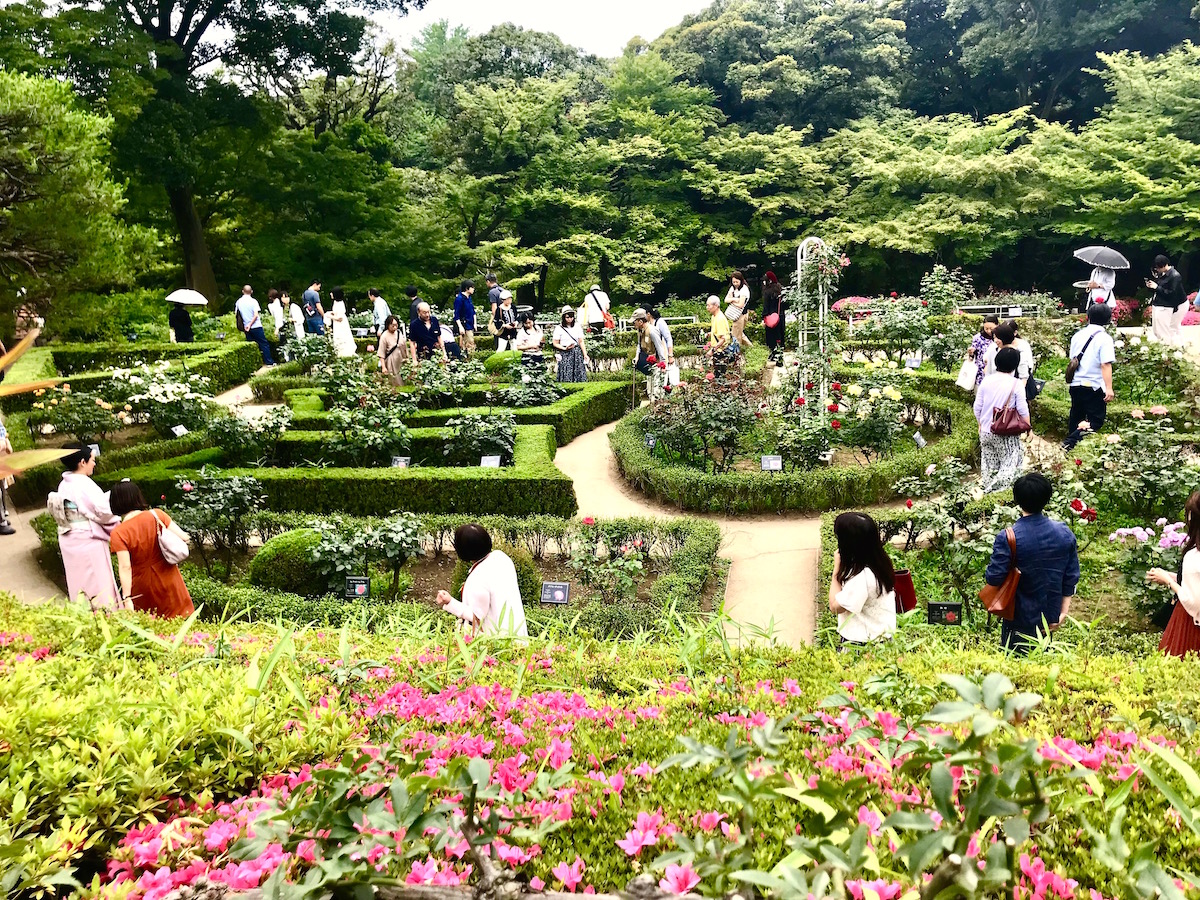
Kyu Furukawa rose garden © Alma Reyes
Visitors come to this residence primarily to view the rose gardens, which boast 200 rosebushes of 100 different rose varieties. Conder’s western garden design is beautifully landscaped in symmetrical geometric composition on three-leveled terraces consisting of: roses and yucca (or Spanish dagger) flowers on the first level; green shrubs on the second level; and azaleas on the third level.
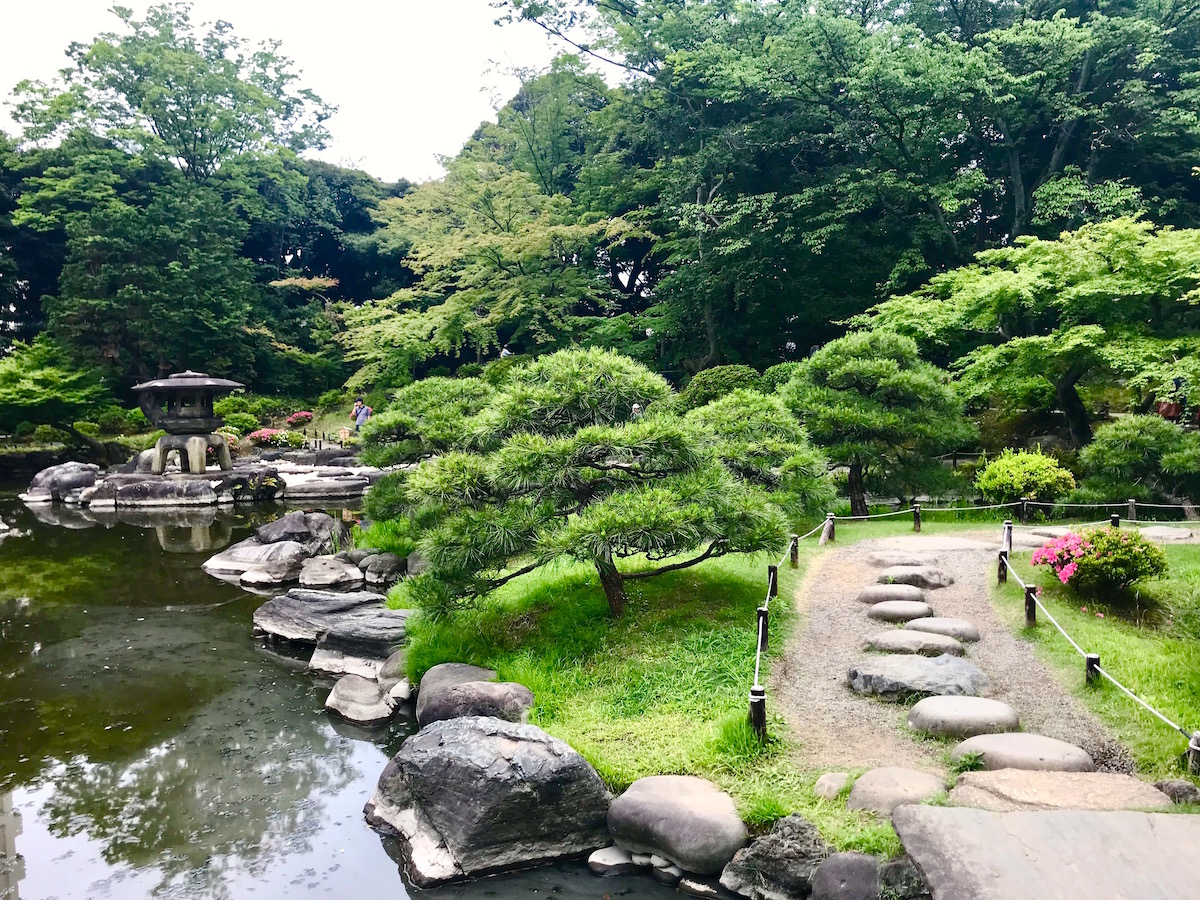
Kyu Furukawa Japanese garden © Alma Reyes
Ascending further down to the inner garden, one reaches the heart-shaped pond called Shinjiike, accented by a bridge, stone lantern, and waterfall, representing the typical Japanese garden architecture surrounded by a wide array of shrubs and trees: nettle trees, cherry trees, evergreen trees, Japanese wax trees, Eurya japonica, Himalayan cedar, pine trees, holly trees, Japanese camellia, bottlebrush, maple trees, Japanese irises, and other species. The landscaping was completed by designer Jihei Ogawa.
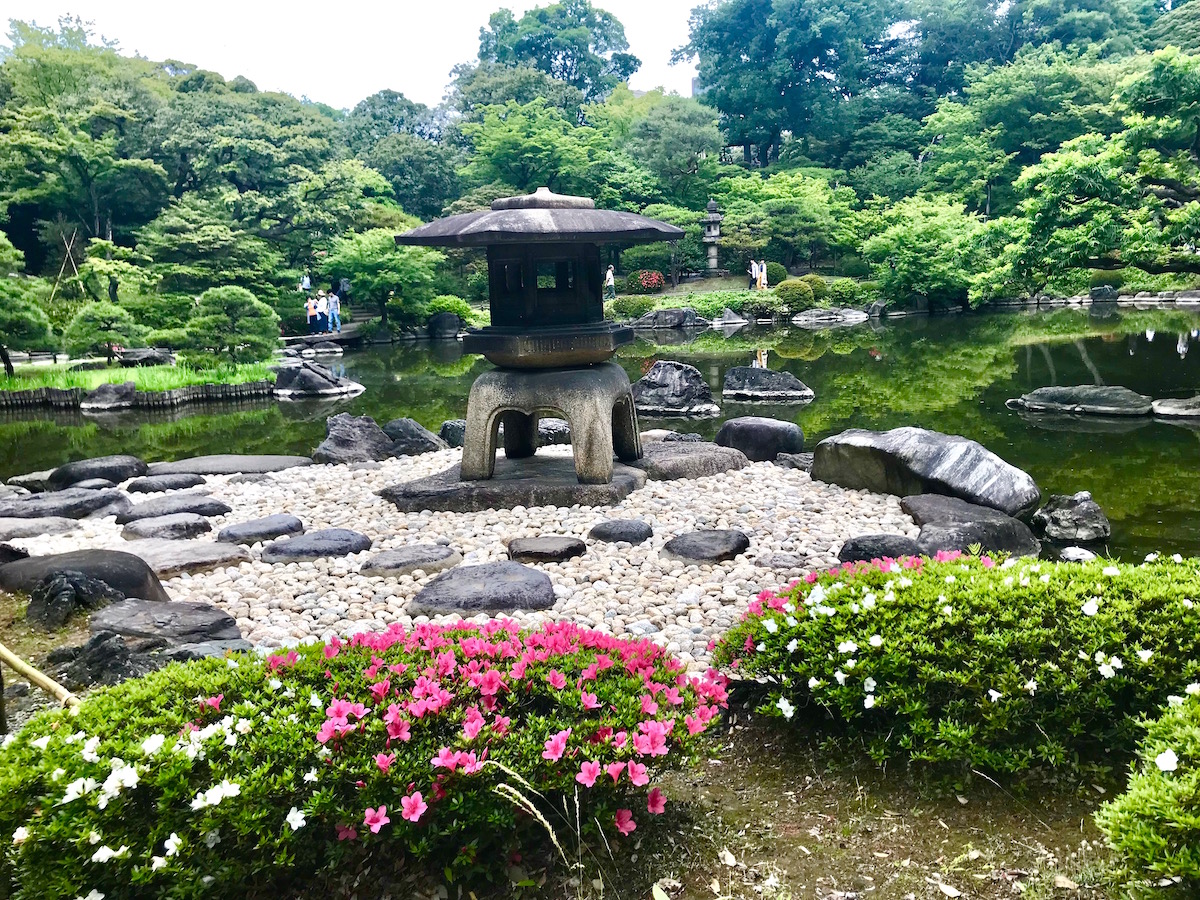
Kyu Furukawa Japanese garden with shinjike pond © Alma Reyes
The blend of western and Japanese design provides this residence and garden with extra curiosity and pleasure.
Kyu-Furukawa Gardens
Where: 1-27-39 Nishigahara, Kita-ku, Tokyo. Map
Open: 9 a.m.-5 p.m.
Access: Nishigahara station (Namboku Line), 7-minute walk; Komagome station (JR Yamanote Line), 12-minute walk
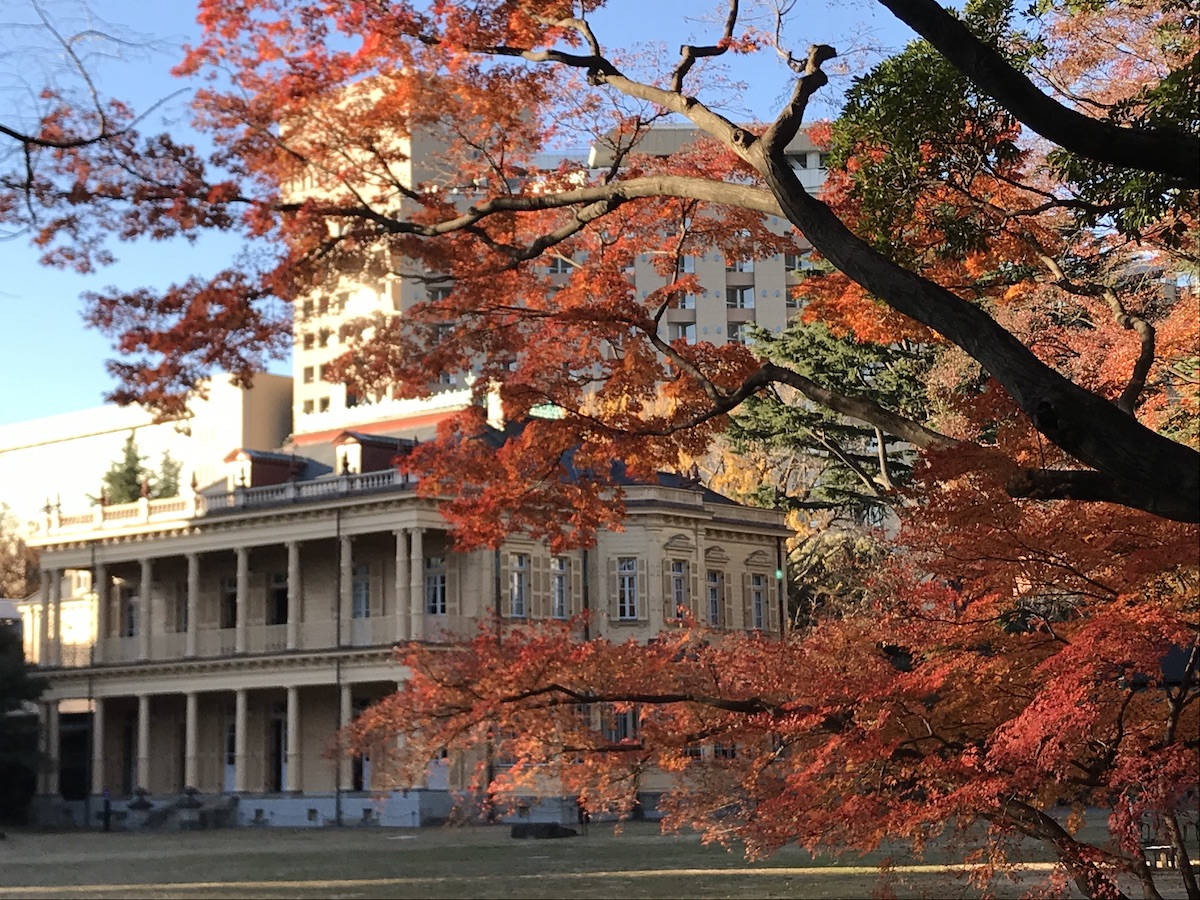
Kyu Iwasaki-Tei mansion exterior view in autumn © Alma Reyes
Kyu Iwasaki-Tei Gardens (Former Iwasaki-Tei Gardens)
The Kyu Iwasaki-Tei Gardens’ mansion, completed in 1896, is another architectural accomplishment by Josiah Conder from the Meiji era. Conder was commissioned by Hisaya Iwasaki, son of the former founder of the Mitsubishi Group, to design the western-style house and the Swiss-style billiards building. Today, although less than half of the entire estate remains due to confiscation by the judicial office of the Allied Occupation after World War II, the Important Cultural Asset has proven to be a worthwhile visit for the Meiji-restored structure and furnishings and marvelous gardens.
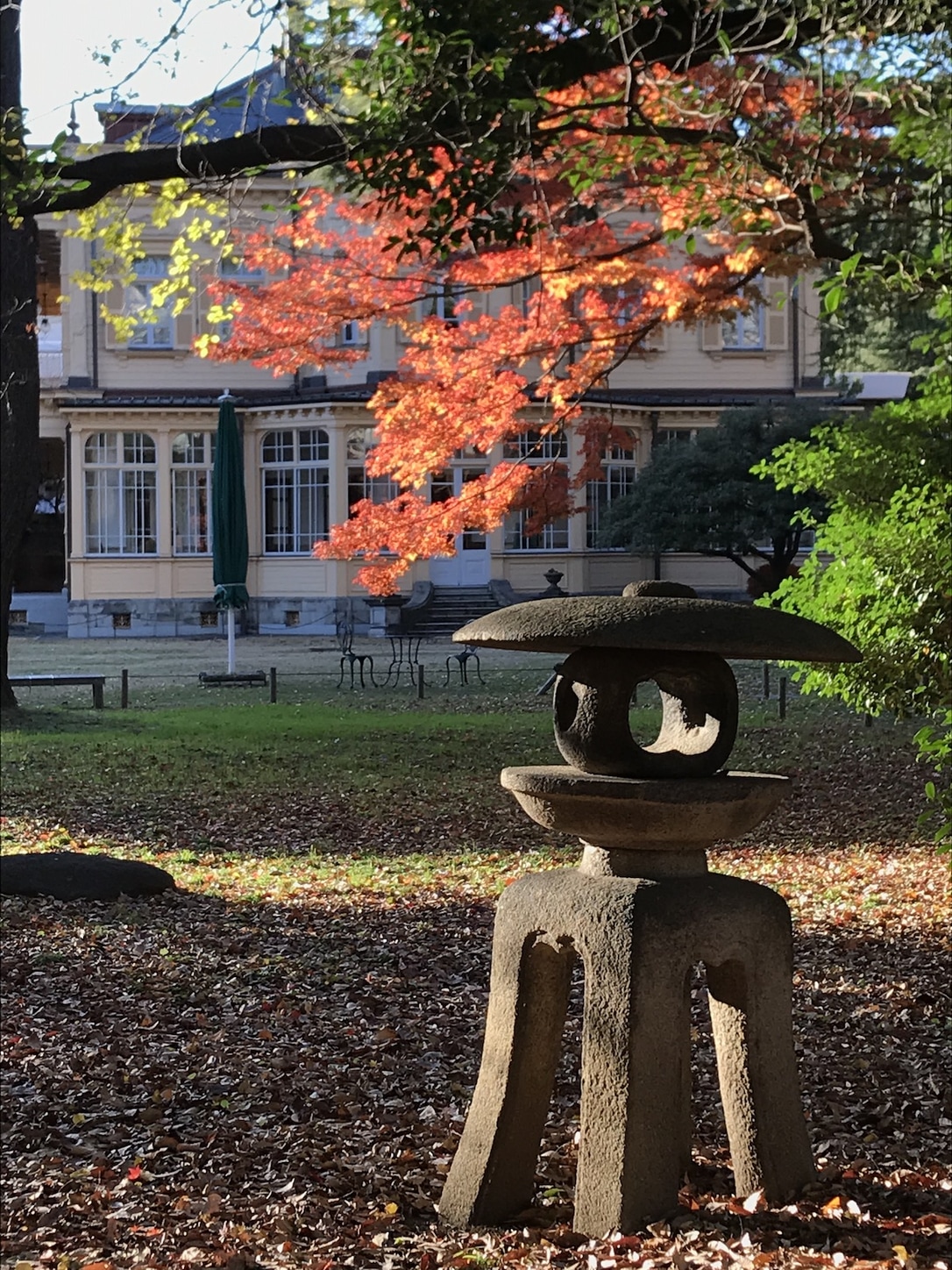
Kyu Iwasaki-Tei mansion exterior and garden view © Alma Reyes
Entering the two-story western mansion ushers the ambiance of a classical European villa. The 17th-century Jacobean style is evident in the grand wooden staircase, balusters, wall and door panels, mirror moldings above the fireplace, and room furniture. The rooms are further accented by the British Renaissance style and some Islamic motifs, such as the wallpaper designs.
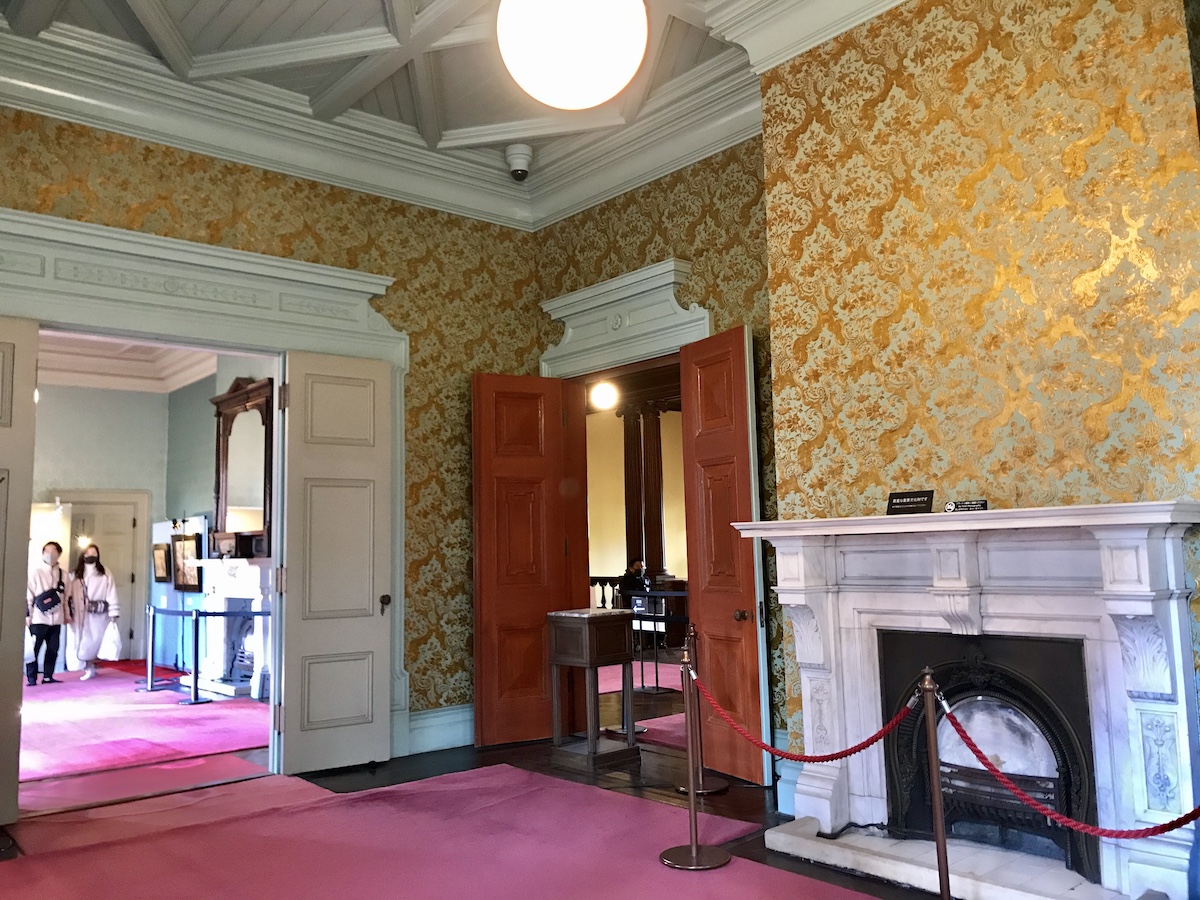
Kyu Iwasaki-Tei mansion interior © Alma Reyes
On the south side of the residence is a charming columned veranda in cream-colored decorative iron grills. From here, the view of the vast lawn with luscious trees behind and a Japanese rock garden on the right side embraces a perfect palette of gradating colors, especially in autumn. Connected by a wooden corridor from the Western mansion is the Japanese house in Shoin style built by Kijuro Okawa.
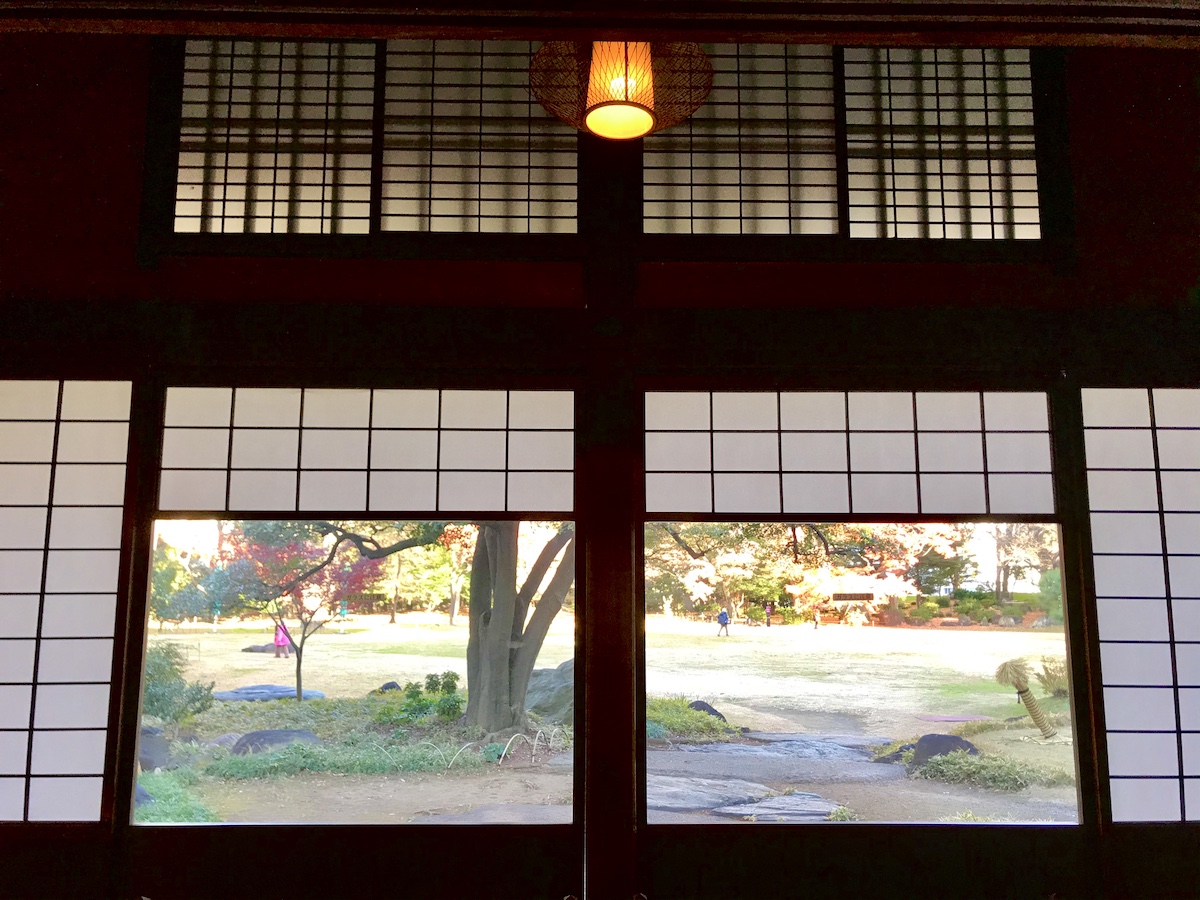
Kyu Iwasaki-Tei Japanese house interior © Alma Reyes
Diamond ornamental patterns, based on the Iwasaki family crest, are found on the sliding door knobs, window fittings and nail covers. Shoji windows line the corridors strategically overlooking the garden outside. There is also a beautiful inner Japanese patio. As you step out of the Japanese house, you can find the billiard room in a detached house on the farther end next to the western mansion. It is stylized as a Swiss mountain log house with its gabled roof. As the lawn is quite expansive, there is plenty of time and space to stroll around the surrounding trees, rocks and Japanese stone lanterns.
Kyu Iwasaki-Tei Gardens
Where: 1-3-45 Ikenohata, Taito City, Tokyo. Map
Open: 9 a.m.-5 p.m.
Access: Yushima station, 3-minute walk; Ueno Hirokoji station/Ueno Okachimachi station, 10-minute walk
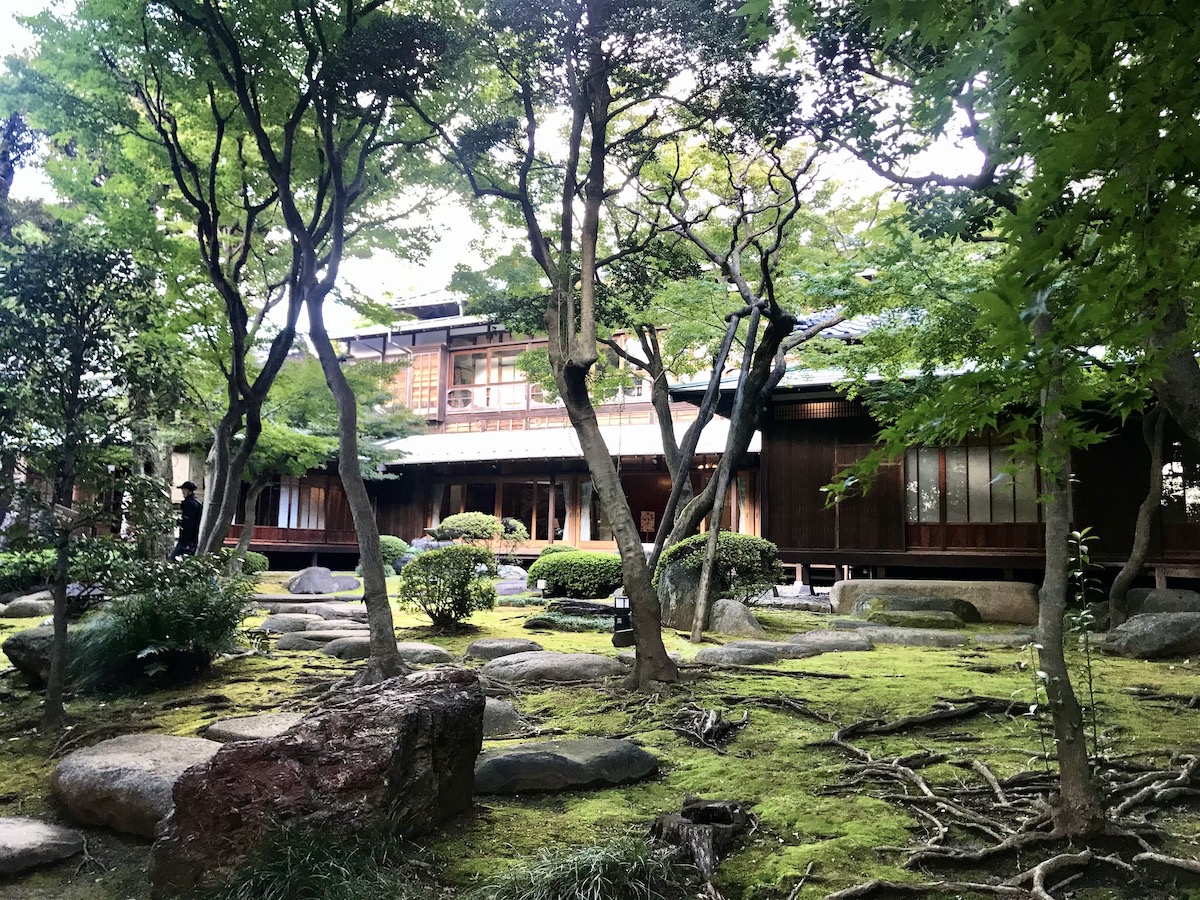
Kyu Asakura House and garden © Alma Reyes
Kyu Asakura House (Former Asakura House)
Just two minutes by train from Shibuya in Daikanyama we can find a hidden old residence and garden, the Kyu Asakura House. Immersed in the center of the commercial and trendy hub of Daikanyama, whose quaint and avant-garde shops and restaurants are favorably frequented by the young, this aged residence comes as a delightful surprise. Built in 1919 by former national assembly chairman Torajiro Asakura, the Japanese-style house and garden have been designated as an important cultural property by the Japanese government.
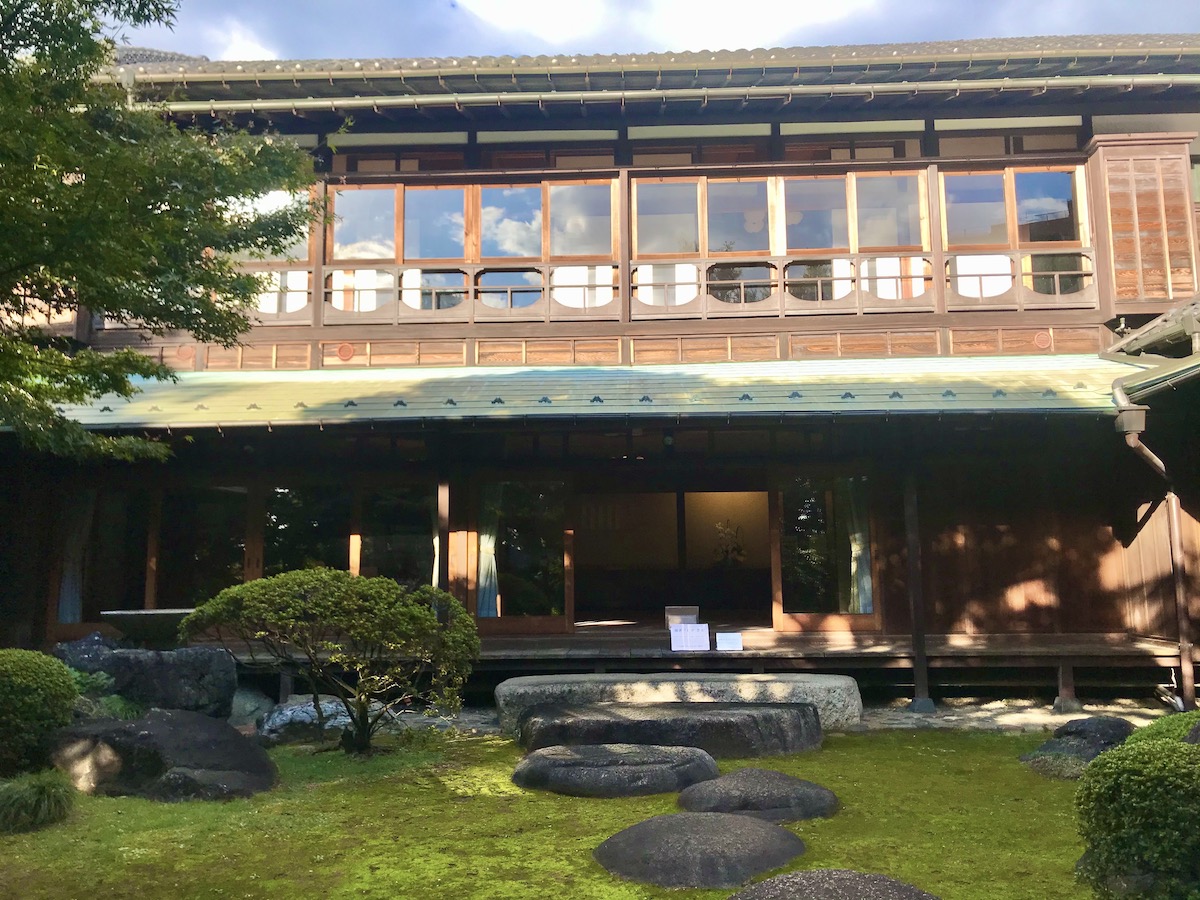
Kyu Asakura House exterior view © Alma Reyes
Asakura previously worked in a lumberyard, which eventually led him to consider the use of ideal timber for his home highly. The two-story house designed according to the traditional sukiya-zukuri style is huge and consists of numerous rooms for varied purposes.
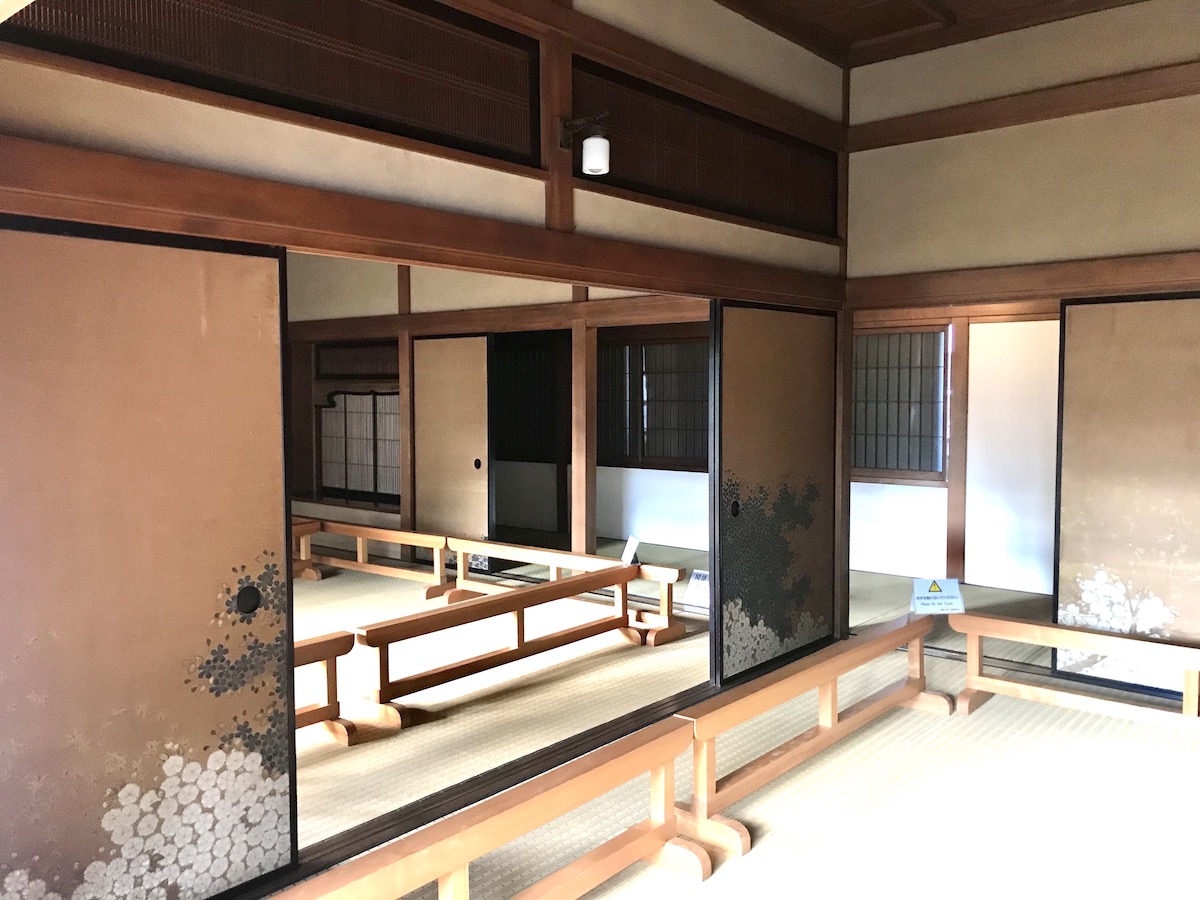
Kyu Asakura House interior © Alma Reyes
The quarters on the ground floor are made of cedar consisting of meeting rooms, a tearoom, a Buddhist altar room, and living spaces for the family. The central area with glass hardwood sliding doors faces the expansive garden, and you can sit here on the wooden corridor for some quiet contemplation.
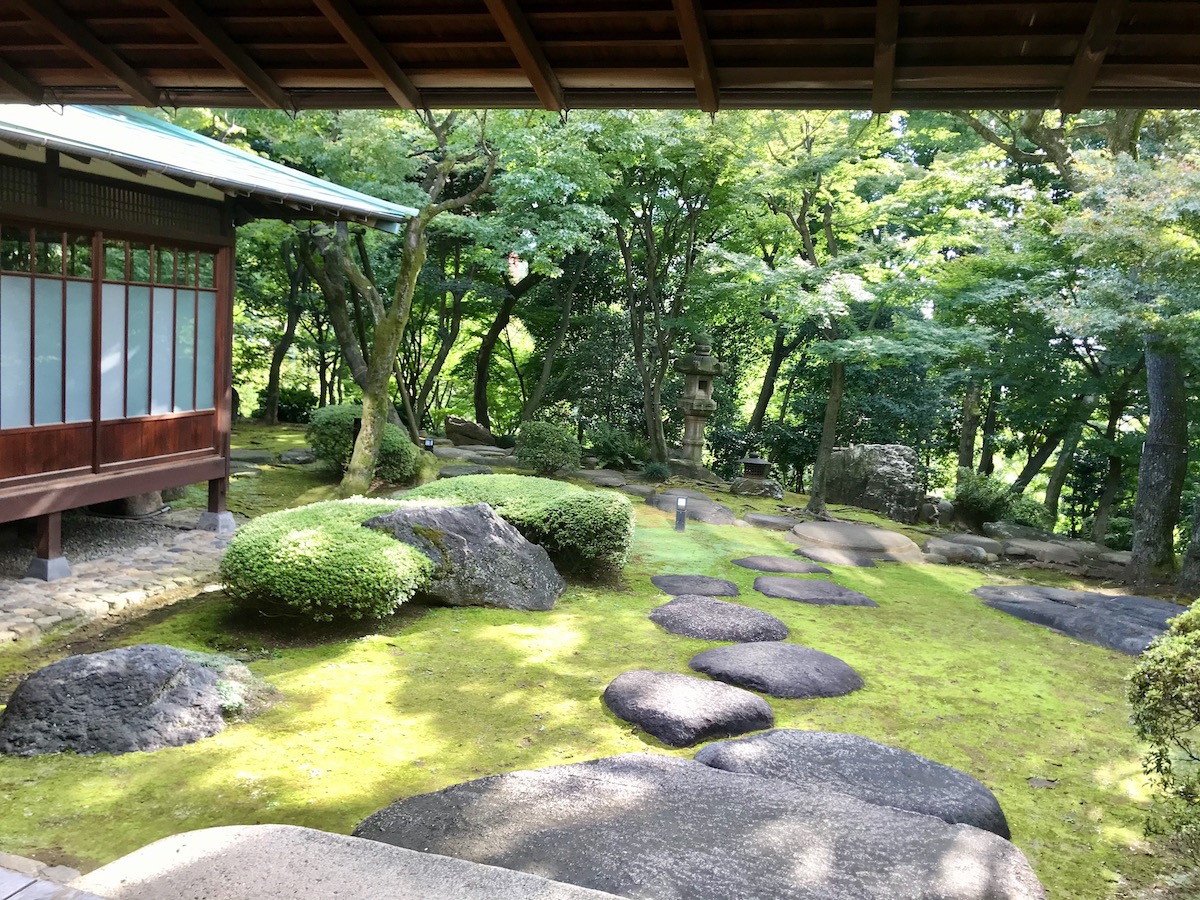
Kyu Asakura House garden view © Alma Reyes
Delicate paintings on the fusuma closet doors can also be admired. The quarters on the second floor are also encircled by wooden corridors, which offer spectacular garden views. Stepping out into the mossy garden takes you to different elevations from a cliff and down the slope, with stone steps leading to a family of maple and pine trees and other tree varieties. The green scenery is further adorned with several stone lanterns and ornamental rocks and step-stones. Autumn scenes can especially be enjoyed around the garden. There is also a storehouse connected to the west side of the main building and surrounds the courtyard. After some fun shopping and a sumptuous lunch in Daikanyama, it would definitely be worthwhile to drop by Kyu Asakura House to end a busy day.
Kyu Asakura House
Where: 29-20 Sarugakucho, Shibuya-ku, Tokyo. Map
Open: 10 a.m.-4:30 p.m.
Access: Daikanyama station, 5-minute walk
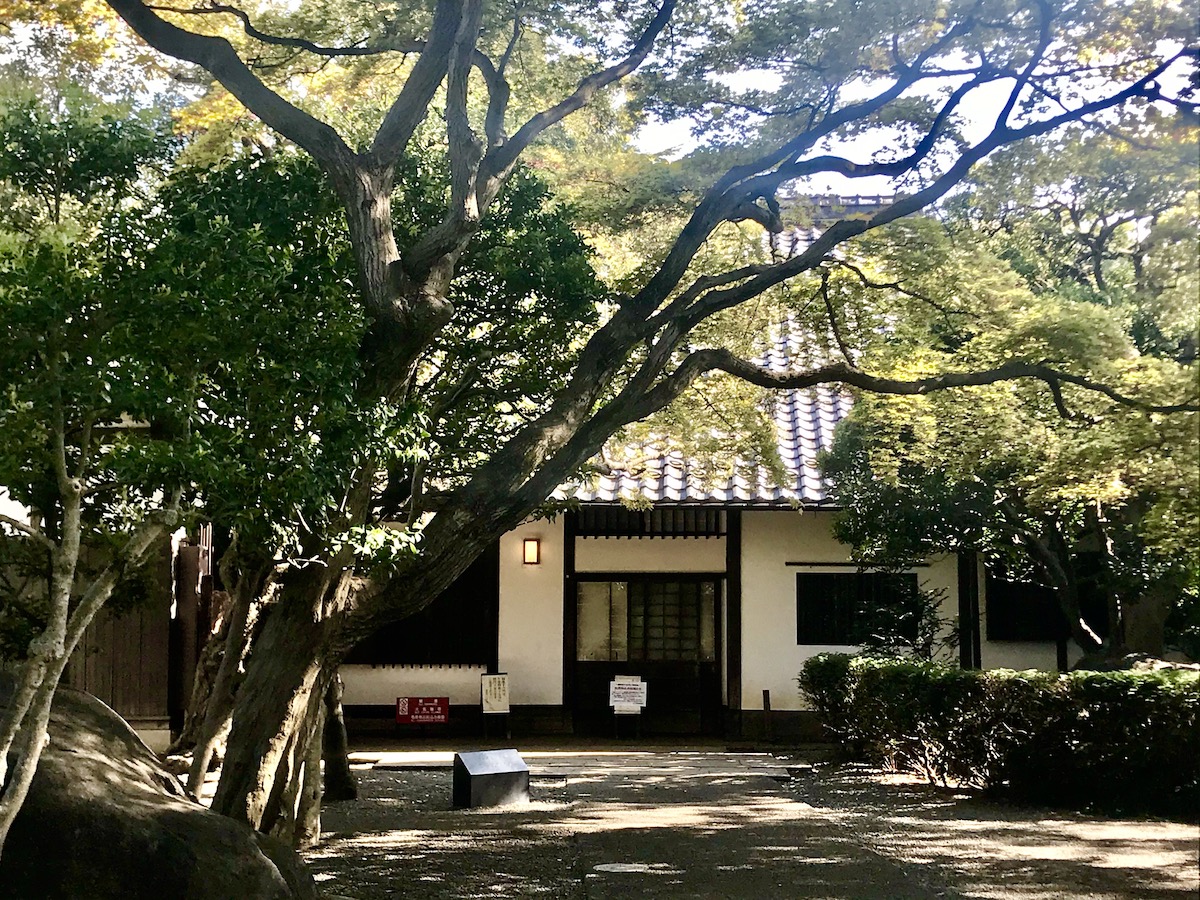
Former Kosaka Residence, entrance to the house © Alma Reyes
Seta 4-Chome Former Kosaka Residence
For those who would like to shy away a bit from the hustle-bustle of downtown Tokyo, a short trip to Seta in Setagaya offers a pleasant experience in the middle of a wooded forest tucked in a residential neighborhood. Located between Yoga and Futako Tamagawa stations along the Denentoshi Line, the Seta 4-Chome Former Kosaka Residence sits atop the hill of a lush forest filled with tall, thick trees including bamboo trees, bushes, and flower patches. Erected in 1938, the house belonged to Junzo Kosaka, former director of the Shinano Bank and president of the Shinano Mainichi Shimbun. He was also a member of the House of Representatives and the House of Lords. Kosaka’s sons Zentaro Kosaka and Tokusaburo Kosaka were former Foreign Minister and Minister of Transportation respectively, and grandson Kenji Kosaka was also former Minister of Education, Culture, Sports, Science and Technology.
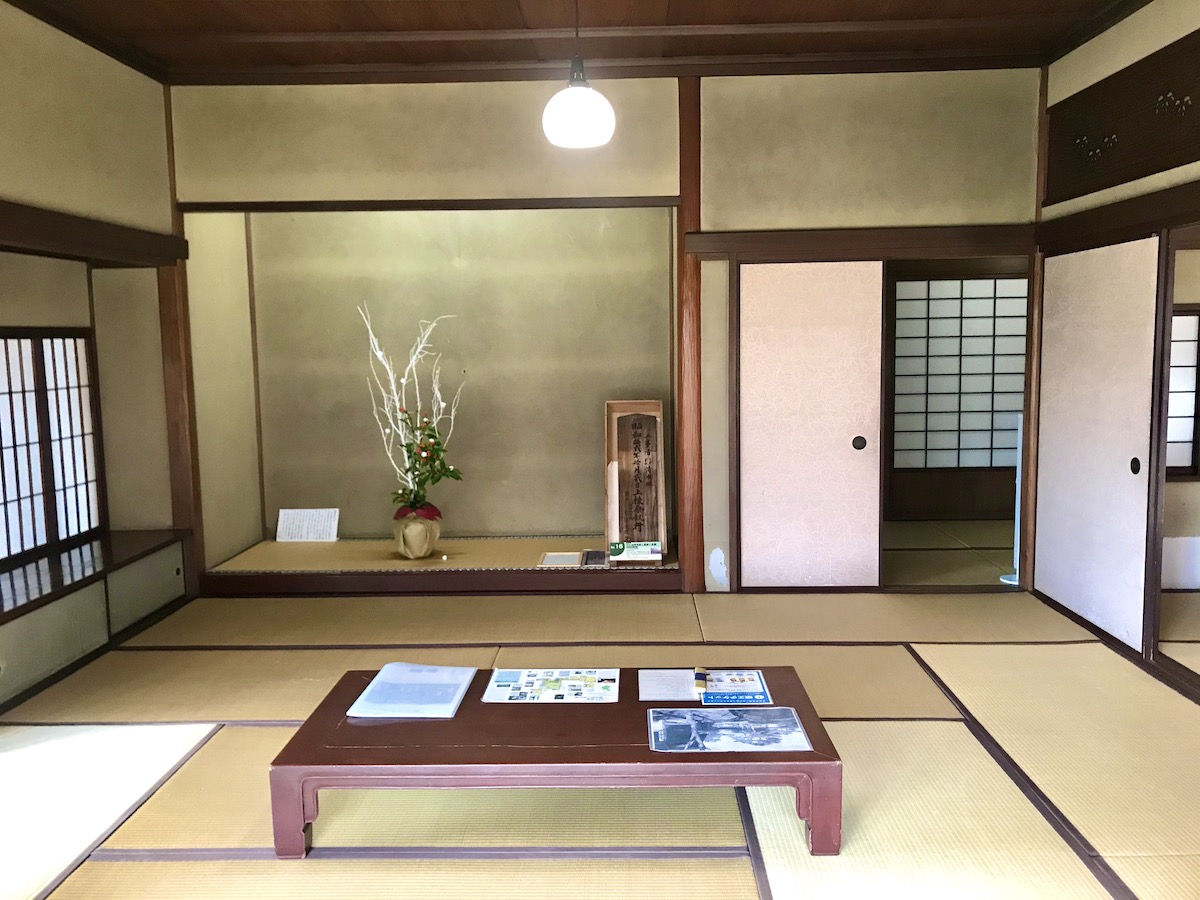
Former Kosaka Residence interior © Alma Reyes
The family villa has been designated as a cultural property by the Setagaya Ward. There are three entrance gates—two atop the hill and one on the lower ground closer to Futako Tamagawa Station. The main entrance on the upper grounds leads directly to the old house. The interior is modest, and while lacking in furniture display, amply presents a traditional Japanese home with its tatami mat rooms, engawa corridors, and sliding doors showcasing the wonderful garden and forest scenery. There is a drawing room with wood parquet flooring, a fireplace and some western furniture remaining from the era.
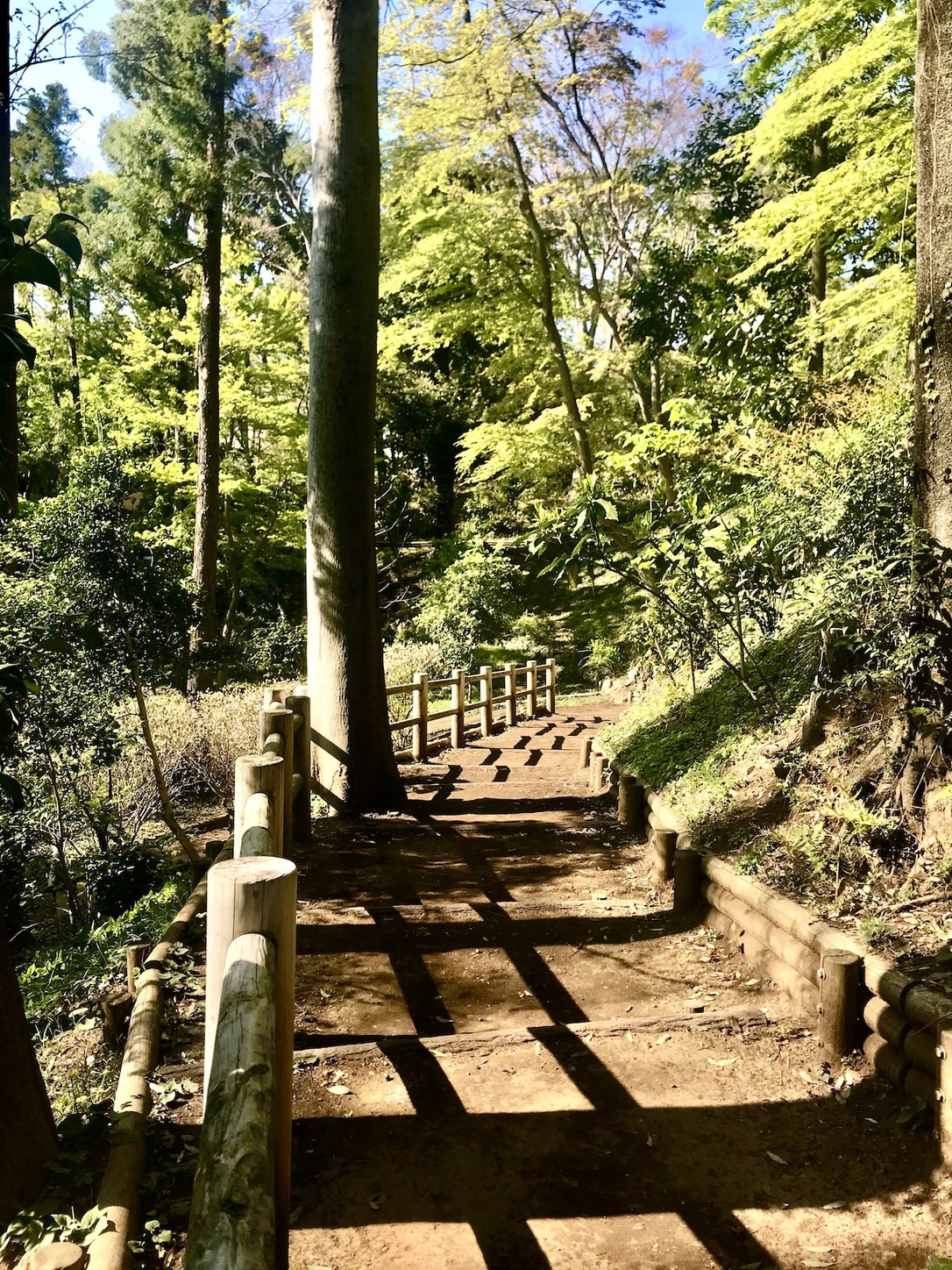
Former Kosaka Residence, forest © Alma Reyes
After taking a tour of the home interior, you can now pass through the side wooden gate leading downwards to the rich forest. Wooden log railings charmingly flank the stone pathway, and you can peep through the rows of bamboo trees on the left side of the lower grounds. There is also a small pond below and tables for resting or having a picnic. If you’re lucky, you can spot Mt. Fuji from the highlands where spring water is believed to flow from into the lowlands.
Seta 4-Chome Former Kosaka Residence
Where: 4-41-21 Seta, Setagaya-ku, Tokyo. Map
Open: 9:30 a.m.-4:30 p.m. Closed Mondays
Access: 20-minute walk or Bus from Futako Tamagawa station bound for “Seikado Bunko” (Seikaido Bunko Art Museum), 2 minutes from bus stop

